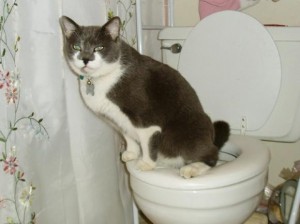We have found this great article relating to How to Dispose of Cat Poop and Litter Without Plastic Bags below on the web and accepted it made perfect sense to write about it with you on this site.

Intro
As cat proprietors, it's necessary to be mindful of exactly how we dispose of our feline pals' waste. While it might appear convenient to flush feline poop down the commode, this practice can have damaging effects for both the environment and human wellness.
Ecological Impact
Flushing cat poop introduces hazardous microorganisms and bloodsuckers right into the water, posing a substantial risk to water ecological communities. These pollutants can negatively impact aquatic life and concession water high quality.
Wellness Risks
Along with ecological concerns, purging feline waste can likewise posture health dangers to people. Cat feces may have Toxoplasma gondii, a bloodsucker that can create toxoplasmosis-- a possibly extreme disease, particularly for expecting ladies and individuals with weakened immune systems.
Alternatives to Flushing
The good news is, there are much safer and extra liable means to deal with pet cat poop. Think about the following options:
1. Scoop and Dispose in Trash
The most usual approach of getting rid of feline poop is to scoop it right into a naturally degradable bag and throw it in the trash. Make certain to use a dedicated litter inside story and dispose of the waste without delay.
2. Usage Biodegradable Litter
Choose naturally degradable cat trash made from materials such as corn or wheat. These trashes are eco-friendly and can be securely thrown away in the garbage.
3. Bury in the Yard
If you have a yard, consider burying feline waste in an assigned location far from veggie yards and water resources. Make certain to dig deep adequate to stop contamination of groundwater.
4. Install a Pet Waste Disposal System
Buy an animal waste disposal system specifically made for pet cat waste. These systems make use of enzymes to break down the waste, lowering smell and environmental impact.
Final thought
Accountable animal possession prolongs beyond supplying food and sanctuary-- it additionally entails proper waste management. By refraining from flushing feline poop down the toilet and selecting alternate disposal techniques, we can decrease our environmental footprint and safeguard human health.
Why Can’t I Flush Cat Poop?
It Spreads a Parasite
Cats are frequently infected with a parasite called toxoplasma gondii. The parasite causes an infection called toxoplasmosis. It is usually harmless to cats. The parasite only uses cat poop as a host for its eggs. Otherwise, the cat’s immune system usually keeps the infection at low enough levels to maintain its own health. But it does not stop the develop of eggs. These eggs are tiny and surprisingly tough. They may survive for a year before they begin to grow. But that’s the problem.
Our wastewater system is not designed to deal with toxoplasmosis eggs. Instead, most eggs will flush from your toilet into sewers and wastewater management plants. After the sewage is treated for many other harmful things in it, it is typically released into local rivers, lakes, or oceans. Here, the toxoplasmosis eggs can find new hosts, including starfish, crabs, otters, and many other wildlife. For many, this is a significant risk to their health. Toxoplasmosis can also end up infecting water sources that are important for agriculture, which means our deer, pigs, and sheep can get infected too.
Is There Risk to Humans?
There can be a risk to human life from flushing cat poop down the toilet. If you do so, the parasites from your cat’s poop can end up in shellfish, game animals, or livestock. If this meat is then served raw or undercooked, the people who eat it can get sick.
In fact, according to the CDC, 40 million people in the United States are infected with toxoplasma gondii. They get it from exposure to infected seafood, or from some kind of cat poop contamination, like drinking from a stream that is contaminated or touching anything that has come into contact with cat poop. That includes just cleaning a cat litter box.
Most people who get infected with these parasites will not develop any symptoms. However, for pregnant women or for those with compromised immune systems, the parasite can cause severe health problems.
How to Handle Cat Poop
The best way to handle cat poop is actually to clean the box more often. The eggs that the parasite sheds will not become active until one to five days after the cat poops. That means that if you clean daily, you’re much less likely to come into direct contact with infectious eggs.
That said, always dispose of cat poop in the garbage and not down the toilet. Wash your hands before and after you clean the litter box, and bring the bag of poop right outside to your garbage bins.
https://trenchlesssolutionsusa.com/why-cant-i-flush-cat-poop/

Do you really like more info about Don’t flush cat feces down the toilet? Leave feedback below. We would be interested to hear your thoughts about this blog. We hope to see you back again before long. Don't hesitate to take a moment to share this blog if you appreciated it. I praise you for your time. Visit again soon.
Click For More Info